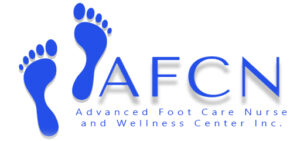Completing a Proper Foot Health check involves several steps.

- Janis Boudreau
Here’s a step-by-step guide on how to do it:
- Gather the necessary tools:
Collect a chair, a towel, a magnifying glass, a mirror (optional but helpful), a pen or pencil, and a notepad or foot health checklist form.
- Find a comfortable and well-lit area:
Locate a suitable place where you can sit down and comfortably examine your feet. Make sure there’s enough light to see any potential issues clearly.
- Wash and dry your feet:
Start by washing your feet thoroughly with warm water and mild soap. Pay special attention to the spaces between your toes and the soles of your feet. Dry them completely with a towel.
- Inspect for any visible issues:
Sit down and prop one foot onto your other leg, resting it comfortably. Use the magnifying glass and, if necessary, the mirror to inspect your feet for any visible issues such as blisters, cuts, calluses, corns, discoloration, swelling, rashes, or any signs of infection. If you notice any abnormalities, write them down on your notepad or foot health checklist form.
- Check your toenails:
Examine your toenails for ingrown nails, fungal infections, or any other abnormalities. Trim your toenails straight across and avoid cutting them too short to prevent ingrown nails. If you have difficulty trimming your toenails, consider seeking help from a podiatrist.
- Assess circulation:
Gently press your thumb against the top of your foot and hold it for a few seconds. Release the pressure and observe how quickly the color returns to normal. This can help indicate the quality of the blood circulation in your feet.
- Test sensation and nerve function:
Close your eyes and lightly touch various areas of your foot, including the sole, heel, toes, and sides, with a pen or pencil. See if you can feel the touch on each part of your foot. Note any areas where you have decreased or absent sensation.
- Evaluate foot arches and alignment:
Stand up and observe the alignment of your feet. Look for any signs of flat feet, high arches, or abnormal foot positioning. This can help detect issues such as overpronation or supination.
- Check footwear:
Assess your shoes for signs of wear, proper fit, and support. Ensure that your shoes have enough space for your toes and offer appropriate cushioning and stability.
- Take notes and seek professional help if needed:
Write down any observations, abnormalities, or concerns you noted during the foot health check. If you encounter any severe foot pain, persistent issues, or have diabetes or other underlying medical conditions, consider consulting a healthcare professional or podiatrist for further evaluation and guidance.
Remember to perform regular foot health checks to detect any issues early and maintain the overall health of your feet.




